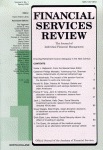The Marriage Tax Penalty and Subsidy under Tax Reform
DOI:
https://doi.org/10.1016/1057-0810(91)90022-QAbstract
This paper considers the tax treatment of marriage implied by the Tax Reform Act of 1986. It is shown, first, that the maximum marriage subsidy varies erratically and widely over a range comparable to that in the prereform tax system. Second, the maximum marriage penalty varies erratically, but less widely, again over a range comparable to that in the old tax system. And third, the fraction of possible values of secondary income that lead to a marriage subsidy rather than penalty varies erratically over a range much wider than that in the prereform system. Eastern Economic Journal, Vol. 15, No. 2 (April-June 1989), pp. 113-116. (Reprinted with permission of the Journal of Economic Literature.)
Published
How to Cite
Issue
Section
License
Copyright (c) 1991 JAI Press Inc.

This work is licensed under a Creative Commons Attribution-NonCommercial 4.0 International License.
Author(s) retain copyright and grant the Journal right of first publication with the work simultaneously licensed under a Creative Commons Attribution-NonCommercial 4.0 International License that allows to share the work with an acknowledgment of the work's authorship and initial publication in this Journal.
This license allows the author to remix, tweak, and build upon the original work non-commercially. The new work(s) must be non-commercial and acknowledge the original work.


